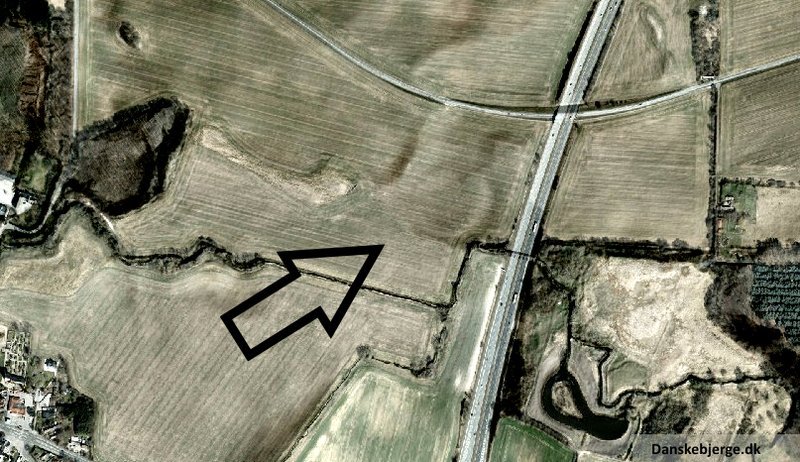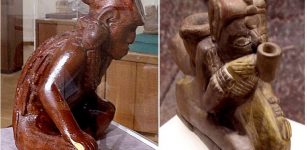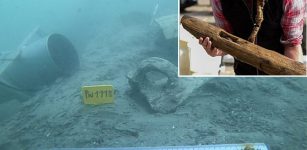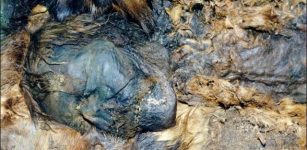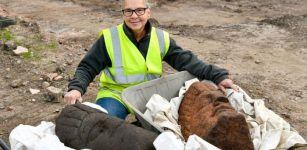Archaeologists Uncover Secrets Of ‘Vallø Borgring’ Viking Age Circular Fortress
AncientPages.com - Archaeologists begin to uncover secrets of a Viking Age circular fortress discovered a year ago. It's the first Viking Age fortress found in Denmark for the last 60 years and is considered an important archaeological discovery.
Although, there were Vikings in other countries, these circular fortresses are unique to Denmark. Many have given up hope that there were many of them left, archaeologists say.
The fortification - with a 10 to 11 meter-wide palisade – a stockade with pointed wooden poles - is located on the field close to the noisy south highway, in Vallø on the Danish island of Zealand, around 30 miles (48km) south of Copenhagen.
At 145 meters in diameter, the Vallo ring-fortress (Vallø Borgring), as it has been named, is the third largest of the five found in Denmark.
The four other circular fortresses have been dated to the reign of Harald Bluetooth in the late 900s. The construction of this fortress is very similar to the one found in Hobro, and thus it's likely that Harald Bluetooth was the builder too, the Danish Castle Centre's experts believe .
Carbon-14 dating has confirmed that the fortress is from the 900s. The massive ring fortress has a diameter of 142 meters with 7 metre-high palisades, while it also endured a fiery blaze at one of its gates.
The fort dates from the same century as the other four Viking forts found in Denmark.
One of the surprising features of the construction is that the landscape was changed drastically to accommodate it. There was initially not enough space for the circular structure, but a plateau was artificially built.
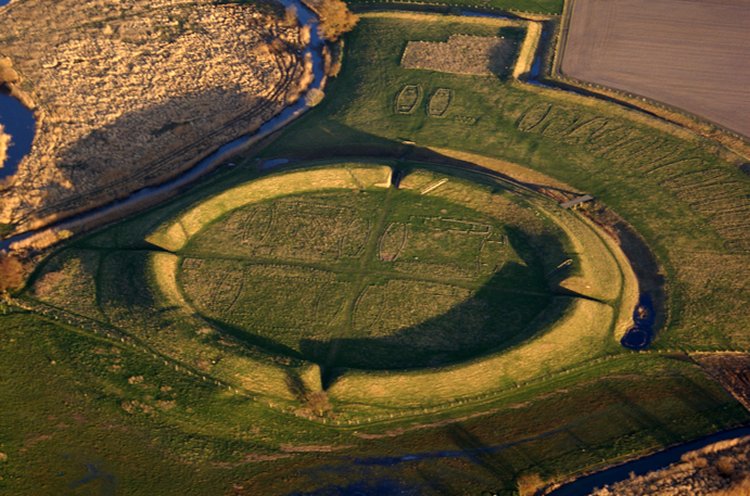
The newly discovered fortress is large at 475ft (145 meters) from side to side and has four gates as all the Trelleborg fortresses of those times.
“Some poor people have moved tonnes and tonnes of heavy underground clay. It’s a really unusual building project that has been carried out, with the sole purpose that the fort would signify power.”
Now the time has come for the archaeologists to unearth the hidden secrets and legacy of the fortress, located near Køge just south of Copenhagen. A 20 million kroner grant from the AP Møller Fund and 4.5 million kroner from Køge Municipality has helped make that possible.
“With the grant, the Danish Castle Centre – a division of Museum Southeast Denmark and Aarhus University – has worked out a unique research project seeking to explore the secrets Borgring is hiding beneath Danish soil,” the Danish Castle Centre said.
“With the use of modern archaeological methods the scientists and archaeologists will investigate how the fortresses were used, how they were organised, how quickly they were built, their age and what environment, landscape and geography they were a part of.”
Was it Harald Bluetooth?
But the three-year excavation project, handled jointly by Museum Southeast Denmark and Aarhus University, is expected to reveal even more exciting information about the fortress, such as what the Vikings used it for and whether legendary Danish king Harald Bluetooth was its builder.
The Danish Castle Centre is working on preparing a project that will allow the public to keep track of the excavation of the fortress as it progresses. It will consist of an observation deck and is expected to open on 1 July 2016.
“The ring fortresses of the Viking Age played a vital role in the Danish empire during the 9th and 10th centuries,” the Castle Centre wrote. “Denmark is trying to make them a part of UNESCO’s world heritage.”
“The five ring fortresses are practically identical and must have been built by the same powerful person. Despite their impressive size they lack descriptions in historic sources.”
AncientPages.com
Source: Online Post

